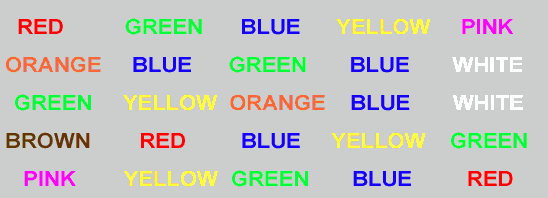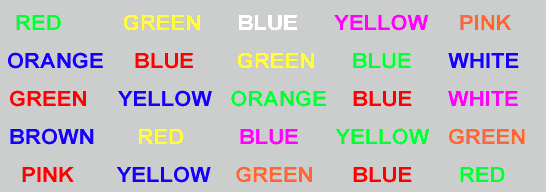LESSON: The Stroop Effect Experiment

You may remember from the beginning of the school year participating in a little experiment called The Stroop Effect. If you don't remember, or if you'd like to try it again just for fun, you can check it out here.
The Stroop Effect phenomenon was discovered by J. Ridley Stroop in the 1930's. He found that the human brain is quicker to read words than it is to process colors -- i.e. word processing is faster than color processing.
Everyone in our class at the beginning of the year took part in this experiment. There were two tests to complete. The first test was to name the color a word was written in where the word and the color it was written in matched:

The second test was to name the color a word was written in where the word and the color it was written in didn't match:

The time it took to complete each test was recorded and the difference between the two test times was also recorded. You can see the list of our class's Stroop Experiment data here.
It will be your job in the upcoming assignment to determine if our class performed how J. Ridley Stroop would expect us to. That is, as a class, did we perform the second test slower than the first. Move on to your assignment now to read all the directions.